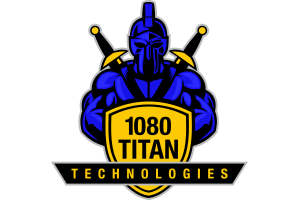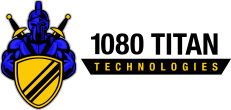The Internet is used for a great many things in business nowadays, but some may not realize just how much Internet speeds have changed over time. This week, we thought we would take a brief look at the evolution of Internet speeds and what today’s speeds allow businesses to do.
Before we get started it’s important to understand how internet speeds are measured. The speeds are measured in megabits. 1,000 kilobits (technically 1,024 KB) is equivalent to 1 megabit and 1,000 megabits (technically 1,024 MB) is equivalent to 1 gigabit.
Dial Up
It has only been about 25 years since Internet connections have become commonplace in the office and the home. When the Internet was first introduced to the mass market, the main way people would access the web was through their phones. If you were on the Internet in the 1990s, people would often have one telephone line for both home and their computer. As the now antiquated model of telephone long distance was in place, many people would have to pay huge phone bills because their Internet service provider was accessed through a long distance call (even if that call was to the next village over or in the same city).
The typical modem around the year 2000 was 56 KB/s which means that when the modem is working optimally with an uninterrupted signal, a one megabyte file could be downloaded in about 20 seconds. Obviously, those speeds wouldn’t work in today’s mobile world where people are getting over 10 GB/s in some places. This connection made instant messaging possible, but any media—including all the media we take for granted today—would take days and weeks to transmit over a dial-up connection.
DSL
Around the turn of the century “high-speed” Internet became popular. Using cable connections, ISPs were able to transmit data much more effectively. This is because the bandwidth of a cable wire has substantially more data transmission capabilities than a telephone wire. Called a Digital Subscriber Line (DSL) connection, this is, to this day, the lion’s share of the connections that you will find available. A DSL connection delivers internet at speeds up to around 100 MB/s but it’s more known to sit in the 5 MB-to-20 MB range.
In this range, users can do a lot of more complex tasks. Today’s cloud-hosted email services require these speeds as do music streaming services and solid website browsing. The widespread use of DSL around 2010 began to spur on application development that is a major part of today’s computing ecosystems. While video streaming is relatively new—and resource intensive—standard definition video (think early YouTube) is capable through a DSL connection.
Fiber Optic
Many of today’s high speed connections are run through fiber optic cables. Fiber optics uses light to transmit data, making it much faster than DSL connections. Most DSL cable systems would lose speed and performance the longer a signal would have to travel through wires. With fiber optics, however, Internet speeds and bandwidth grow exponentially. Today, there are fiber connections that are capable of tens of gigabits per second.
With mobile computing growing in popularity every year, and more and more people relying on Wi-Fi signals to keep from going over mobile data caps, people now rely on these faster internet speeds. Fiber has created an environment of innovation that is driving the on demand computing resources that businesses and individuals rely on. This has made mobile computing more possible and has fueled the work-from-home revolution, online schooling, real-time data collection, telehealth, and communication and collaboration tools including video conferencing.
If you want to quickly determine what your current internet speed is, you can use any number of speed test applications that are available. A good standard is https://www.speedtest.net/. These will give you an idea of what your current internet speed for downloads and uploads are. If you need help ascertaining what type of speeds you need for your business, you should contact the IT professionals at 1080 Titan Technologies today at (404) 800-7946.
There are further innovations in the works that will push Internet speeds faster and faster, with less latency. This type of technology can completely revolutionize the way we view the world. In this new digital landscape, expect to see more and more work to be done on this front in the near future.



